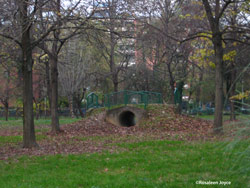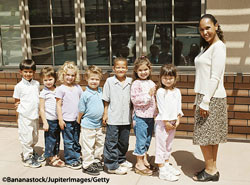Bitesize professional development – Reggio Emilia
Add to My Folder
An exclusive insight into the Reggio Emilia approach to learning

The Reggio Emilia approach
Rosaleen Joyce reflects on her study visit to the small town of Reggio Emilia, Italy, where their particular approach to learning places respect, equality and democracy at the heart of children’s learning and development
Reggio Emilia is a small town of 160,000 inhabitants in Northern Italy. It is always referred to in the literature and lectures as la citta – the city.
There are currently 13 infant-toddler centres (for children from birth to three years) and 24 pre-school centres (for children from three to six years), which follow the Reggio Emilia approach to learning. This is not an approach to learning that is adopted by all infant-toddler and pre-schools in Reggio Emilia – probably less than 50 per cent – nor does it seem to have influenced practice in the rest of Italy. The remaining infant-toddler centres are run by cooperatives, the Catholic Church and the state. Children in Italy officially start school at the age of six. These are predominantly state schools and Rome centralises their approach to learning. I am not aware of any research which illustrates how children who are taught using the Reggio Emilia approach, cope with the transition to the more traditional state school approach to learning.

The historical background
This political approach to learning was a collective response to a new identity in Reggio Emilia at the end of the Second World War, after years of Fascist oppression.
Women involved in the Resistance Movement during the war (the United Italian Women, or UDI), fought to develop pre-schools for their children. They wanted schools that would encourage their children to think for themselves. They invited Malaguzzi, then a teacher, to coordinate the educational projects at these schools and develop a long-term view of possibilities for education.
References
- Barazzoni, R. (1985). Brick by brick. The history of the “XXV Aprile” peoples’s nursery school of Villa Cella.
- Browne, N. (2004). Gender equity in the early years. Berkshire, Open University Press. Translated by Jaqueline Costa. Reggio Emilia, Reggio Children.
- Bruce, T. (2001). Learning through play: babies, toddlers and the Foundation Years. London, Hodder and Stoughton.
- Central Advisory Council for Education (England) (1967). Children and their primary schools, (Plowden Report). London, HMSO.
- Cole , M., Steiner, J., Scribner, S. and Souberman, E. (Eds). (1978). L.S. Vygotsky. Mind in society. The development of higher psychological processes. Cambridge Massachussets, Harvard University Press.
- Dahlberg, G., Moss, P., and Pence, A. (2007). (Second edition). Beyond quality in early childhood education and care. Languages of evaluation. London, Routledge.
- Joyce, R. (2006). Playing outside rain or shine. Blackburn, Educational Printing Services Limited.
- Moss, P. (2004). Dedicated to Loris Malaguzzi. The town of Reggio Emilia and its schools. Presentation at Conference ‘Crossing Boundaries’, February 26th. Thomas Coram Research Unit, Institute of Education, University of London.
- Nutbrown, C. (2006). Key concepts in early childhood education and care. London, Sage Publications.
- Reggio Children (2008). Infant-toddler centres and pre-schools of Reggio Emilia. Historical notes and general information. Reggio Children.
- School Curriculum and Assessment Authority (SCAA) (1997). National framework for baseline assessment: criteria and procedures for the accreditation of baseline assessment schemes. London, DfEE and SCAA.
Scholastic Resource Bank: Early Years - join today!
- Over 2,000 EYFS resources, activity ideas and games
- Perfect for anyone working or playing with children from 0 to 5 years old
- Unlimited access from just £1.25 per month
Already a member? Sign in below.
Published 6 July 2009
Reviews
You need to be signed in to place a review.